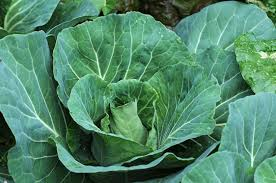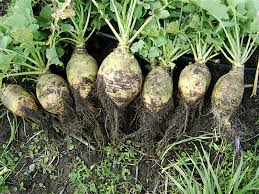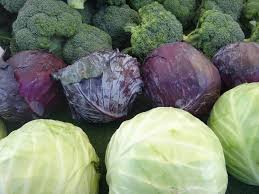If you grow brassicas like broccoli, Brussels sprouts, collards, kale, kohlrabi, or rutabaga in your garden, you might be overlooking an edible treasure: the leaves. While these plants are often cultivated for their roots, stems, or buds, the leaves themselves are highly nutritious and can be a flavorful addition to your meals. In fact, many brassica leaves are packed with essential vitamins like A, C, and K, as well as calcium. Curious about the taste and texture of these leaves? I conducted a taste test to determine which are truly delicious and worth adding to your garden harvest.
The Taste Test: Methodology
For this taste test, I harvested young, tender leaves from the centers of six cultivated brassicas: broccoli, Brussels sprouts, collards, kale, kohlrabi, and rutabaga. After washing them thoroughly, I chopped the leaves and tasted each one raw. Then, I simmered them in lightly salted water for about three minutes to assess their cooked flavor and texture. Two family members joined me in rating the leaves on a scale from 0 to 5, where 0 means terrible and 5 represents excellent.

Best to Worst: What We Found
- Collard Greens
Collard leaves earned the highest score overall. Even raw, they were sweet and tender, with a mild aftertaste. When cooked, they became incredibly soft with a buttery texture, reminiscent of noodles. We rated cooked collards 4.6, making them our favorite. - Brussels Sprout Leaves
Brussels sprouts aren’t just for their small edible buds— the leaves are surprisingly tasty too. The young leaves we tested were cabbage-like, and cooking them brought out a mild flavor that was reminiscent of cooked cabbage. With a score of 4, Brussels sprout leaves were highly rated, and leftovers were eagerly snacked on later. - Kohlrabi Leaves
Kohlrabi leaves had a bold, almost peppery flavor when raw. But after cooking, the bitterness softened, and we found their grassy flavor quite pleasant. We gave them a score of 3.6, though the dense texture might be challenging for some. They work well in pureed soups or stuffed dishes, where texture isn’t a concern. - Kale
Kale leaves were tasty when raw, but cooking them for a short period resulted in a fibrous texture. Although the taste was still good, we rated them at 3.3. If cooked longer, kale may improve in both flavor and tenderness, making it a versatile option. - Rutabaga Leaves
Rutabaga leaves had a strong mustard-like aroma when chopped, and their flavor was similarly pungent. While they didn’t rank highly, scoring only 2.6, we noted their similarity to turnip greens. One taster described the flavor as “soapy,” and another found them too intense to enjoy.

- Broccoli Leaves
Broccoli leaves were the least appealing in this test, earning a disappointing score of 0. The raw leaves were bitter and unpleasant to eat, and cooking them only slightly tamed the flavor. For now, I’ll stick to using broccoli for its buds and stems, as the leaves didn’t impress us.
Conclusion: The Surprising Versatility of Brassica Leaves
This taste test revealed some surprising results. While broccoli and rutabaga leaves are best left for the compost, kohlrabi, Brussels sprout, kale, and collard greens are definitely worth considering as edible, nutritious options. Collards, in particular, were the standout winner, but the tender leaves from Brussels sprouts are a rare delicacy for those who grow them. Ultimately, brassica leaves can be a healthy bonus for your meals—provided you know which ones to pick! So, next time you harvest your brassicas, don’t discard the leaves—they might just be the hidden gem of your garden.
